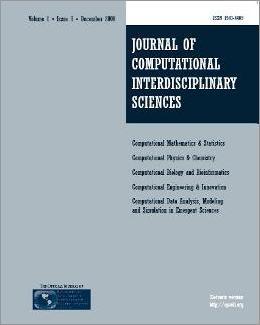
Editorial Office:
Management:
R. S. Oyarzabal
Technical Support:
D. H. Diaz
M. A. Gomez
W. Abrahão
G. Oliveira
Publisher by Knobook Pub


Editorial Office:
Management:
R. S. Oyarzabal
Technical Support:
D. H. Diaz
M. A. Gomez
W. Abrahão
G. Oliveira
Publisher by Knobook Pub
doi: 10.6062/jcis.2013.04.02.0071(Free PDF)
Marcos E.G. Borges and Lamartine N.F. Guimarães
An Autonomous Star Tracker (AST) has been designed and is being constructed at National Institute for Space Research (INPE). In order to calibrate and characterize the AST a sophisticated infrastructure of tests is required. This infrastructure, composed of several instruments, has included one Star Simulator (SS). The simulator has also been designed and constructed at INPE. The SS is basically composed of a LED-based spectrally tunable light source, a pinhole and a collimator. The SS is designed to have the capability of producing different continuum spectral distributions, mimicking star magnitudes in the visible and near-infrared range, what is achieved through the feedback control of individual LEDs. The objective of this work is to present a methodology for the optimal selection of the LEDs that compose the light source. For that, an evolutionary multi-objective approach is used. This approach tries to get the best spectral simulation and at the same time to reduce the number of LEDs used. The methodology applied to model the stars is also presented in this paper, together with a theoretical basis applied to model the LEDs. A series of simulations have been conducted to predict the performance of the designed tunable source. Many source distributions have been constructed for a number of target distributions, and the results are promising.
Autonomous Star Tracker, light source, LED, optimization, generalized extremal optimization.
[1] WERTZ JR. 1978. Spacecraft Attitude Determination and Control, Microcosm Inc, Torrance, CA, USA.
[2] WERTZ JR & LARSON WJ. 1999. Space Mission Analysis and Design, 3rd edn, Microcosm Press, Hawthorne, CA 90250, USA.
[3] FRYC I, BROWN SW & OHNO Y. 2005. Spectral matching with an LED-based spectrally tunable light source, Vol. 5941, SPIE, p. 59411I.
[4] de ALBUQUERQUE BFC. 2005. Estudo dos erros sistemáticos inerentes a um sensor de estrelas de cabec¸a fixa, quando á localização relativa de estrelas, Master’s thesis, Instituto Nacional de Pesquisas Espaciais (INPE), São José dos Campos.
[5] FIALHO MAA. 2007. Estudo comparativo entre dois algoritmos de identificação de estrelas para um sensor de estrelas autônomo de campo largo, Master’s thesis, Instituto Tecnológico de Aeronáutica (ITA), São José dos Campos.
[6] ALLEN CW. 1973. Astrophysical quantities, William Clowes, London.
[7] HALLIDAY D, RESNICK R & KRANE KS. 1996. Física 4, LTC Livros Técnicos e Científicos Editora S.A., Rio de Janeiro.
[8] SMITH WJ. 1996. Modern Optical Engineering: The Design of Optical Systems, McGraw-Hill, USA.
[9] SMITH WJ. 2007. Modern Optical Engineering, McGraw-Hill, USA.
[10] SCHUBERT EF. 2006. Light-Emitting Diodes, 2nd edn, Cambridge University Press, UK.
[11] ESA. 1997. The hipparcos and tycho catalogues. (ESA SP-1200).
[12] CDS. 2007. The hipparcos and tycho catalogues. (CDS I/239).
[13] REED BC. 1998. The composite observational-theoretical HR diagram. Journal of the Royal Astronomical Society of Canada, 92:36–37.
[14] LABSPHERE. 2012. A Guide to Integrating Sphere Radiometry and Photometry, US.
[15] WALL CF, HANSON AR & TAYLOR JAF. 2001. Construction of a programmable light source for use as a display calibration artifact. Proc. SPIE, 4295: 259–266.
[16] FRYC I, BROWN SW, EPPELDAUER GP & OHNO Y. 2005. Ledbased spectrally tunable source for radiometric, photometric, and colorimetric applications. Optical Engineering, 44: 111309.
[17] OHNO Y. 2004. Color rendering and luminous efficacy of white led spectra, Vol. 5530. SPIE, pp. 88–98.
[18] OHNO Y. 2005. Spectral design considerations for white led color rendering. Optical Engineering, 44: 111302.
[19] CIE. 2007. CIE 127:2007: measurement of LEDs (2nd ed), Technical report, Vienna, Austria.
[20] ZEMAX. 2011. Zemax Optical Design Program: User’s Manual, Tucson.
[21] VANDERPLAATS GN. 1998. Numerical optimization techniques for engineering design, 2nd edn, Vanderplaats Research & Development, Colorado Springs.
[22] EIBEN AE & SMITH JE. 2007. Introduction to Evolutionary Computing, Springer, Berlin.
[23] BRANKE J, DEB K, MIETTINEN K & SLOWINSKI R. 2008. Multiobjective Optimization: Interactive and Evolutionary Approaches, Springer-Verlag, Berlin.
[24] de SOUSA FL, RAMOS FM, PAGLIONE P & GIRARDI RM. 2003. New stochastic algorithm for design optimization. AIAA Journal, 41: 1808–1818.
[25] GALSKI RL. 2006. Desenvolvimento de vers˜oes aprimoradas h´ıbridas, paralela e multiobjetivo do m´etodo da otimização extrema generalizada e sua aplicac¸˜ao no projeto de sistemas espaciais,PhD thesis, Instituto Nacional de Pesquisas Espaciais (INPE), São José dos Campos
[26] BOETTCHER S & PERCUS A. 2001. Optimization with extremal dynamics. Physical Review Letters, 86: 5211–5214.
[27] BAK P & SNEPPEN K. 1993. Punctuated equilibrium and criticality in a simple model of evolution. Physical Review Letters, 71: 4083–4086.
[28] de SOUSA FL, VLASSOV V & RAMOS FM. 2004. Generalized extremal optimization: An application in heat pipe design. Applied MathematicalModelling, 28: 911–931.
[29] ABREU B, MARTINS E & de SOUSA FL. 2005. Automatic test data generation for path testing using a new stochastic algorithm. In: Proceedings of 19th Brazilian Symposium on Software Engineering (SBES) pp. 247–262.
[30] SWITALSKI P & SEREDYNSKI F. 2008. Generalized extremal optimization for solving multiprocessor task scheduling problem. Simulated Evol. and Learning Lecture Notes in Comp. Science, 5361: 161–169.
[31] SWITALSKI P & SEREDYNSKI F. 2011. A grid scheduling based on generalized extremal optimization for parallel job model. Parallel Processing and Applied Mathematics, 7204: 41–50.
[32] SWITALSKIP & SEREDYNSKIF. 2012. An effectivemultiprocessor scheduling with use of geo metaheuristic. International Journal of Foundations of Computer Science, 23: 465–481.
[33] LOPES IML, de SOUSA FL & de SOUZA LCG. 2008. The generalized extremal optimization with real codification,International Conference on Engineering Optimization.